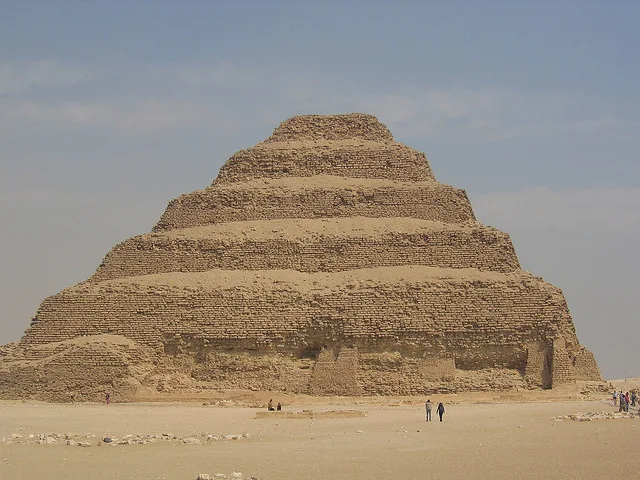The 5 Oldest Engineering Projects In The World
These engineering projects may seem primitive by
today’s standards, but they were groundbreaking efforts for their respective
times. The fact that they still exist today is a testament to their excellent
construction and adherence to solid engineering principles.
Step Pyramid of Djoser
Egypt 2630 B.C.
The first Egyptian pyramid was built to entomb the Third Dynasty Pharoah, Djoser. Constructed entirely of stone, instead of mud-brick like many buildings of the time, it began as a simple, flat-topped building. Construction continued throughout Djoser’s lengthy reign, and when he died this first pyramid was over 200 feet tall. Instead of the smooth sides of later versions, Djoser’s pyramid was constructed with six stepped levels. Its designer, Imhotep, was later deified. Although it was intended to protect Djoser’s remains for all eternity, it was looted in antiquity and most of Djoser’s body has been lost.
Water and Sanitation Systems
Indus valley 2500 B.C.
Homes in the ancient Indus Valley cities of Harappa and Mohenjo Daro were constructed with running water and bathrooms that drained into a public sewer system. Each household had a sink into which clean water flowed from a public water supply. Waste water from each house drained into a system of brick lined sewers designed to trap trash and solids. The cities even had work crews who cleaned the sewers regularly.
Indus valley 2500 B.C.
Homes in the ancient Indus Valley cities of Harappa and Mohenjo Daro were constructed with running water and bathrooms that drained into a public sewer system. Each household had a sink into which clean water flowed from a public water supply. Waste water from each house drained into a system of brick lined sewers designed to trap trash and solids. The cities even had work crews who cleaned the sewers regularly.
Aflaj Water Tunnels
Middle East Before 714 B.C.
A system of subterranean and surface canals constructed to bring irrigation water from wetter mountain areas into the dry desert has existed in what is now Oman for at least 2700 years. The systems were probably in use much earlier, since an aflaj water system in the city of Ulhu was destroyed by King Sargon II of Assyria in 714 B.C. Many ancient aflaj are still being used throughout the Middle East and North Africa to transform useless desert into arable farmland.
Drinking Water Well
Israel 700 B.C.
Beneath the old city of Jerusalem, an ancient channel was constructed to bring water from a spring outside the city walls into an underground cistern. The site has been dated to the reign of King Hezekiah, around 700 B.C. The rock-cut tunnel is over 1500 feet long, with several turns. It was constructed by two teams of diggers that started from opposite ends, and with the use of primitive surveying techniques somehow managed to meet in the middle. The tunnel provided a source of drinking water to the city that allowed it to withstand lengthy sieges.
Israel 700 B.C.
Beneath the old city of Jerusalem, an ancient channel was constructed to bring water from a spring outside the city walls into an underground cistern. The site has been dated to the reign of King Hezekiah, around 700 B.C. The rock-cut tunnel is over 1500 feet long, with several turns. It was constructed by two teams of diggers that started from opposite ends, and with the use of primitive surveying techniques somehow managed to meet in the middle. The tunnel provided a source of drinking water to the city that allowed it to withstand lengthy sieges.
The First Paved Road
Italy 312 B.C.
The first 132 mile stretch of the Via Appia was constructed by the Romans starting in 312 B.C. Paved streets had existed in ancient cities prior to the Via Appia, but the construction of a large scale paved inter-city highway had never before been attempted. The road was constructed with a crown to allow rainwater to drain away, and consisted of cemented base stones covered by a lava stone wearing surface. The Romans eventually constructed thousands of miles of paved road to connect the far reaches of their massive empire.
Author Bio:
Robert
Wallace has worked as an engineer for over 14 years and has contributed to the Best Online EngineeringDegree for others fascinated
with engineering feats and would like the education to begin a career in this
exciting field.















